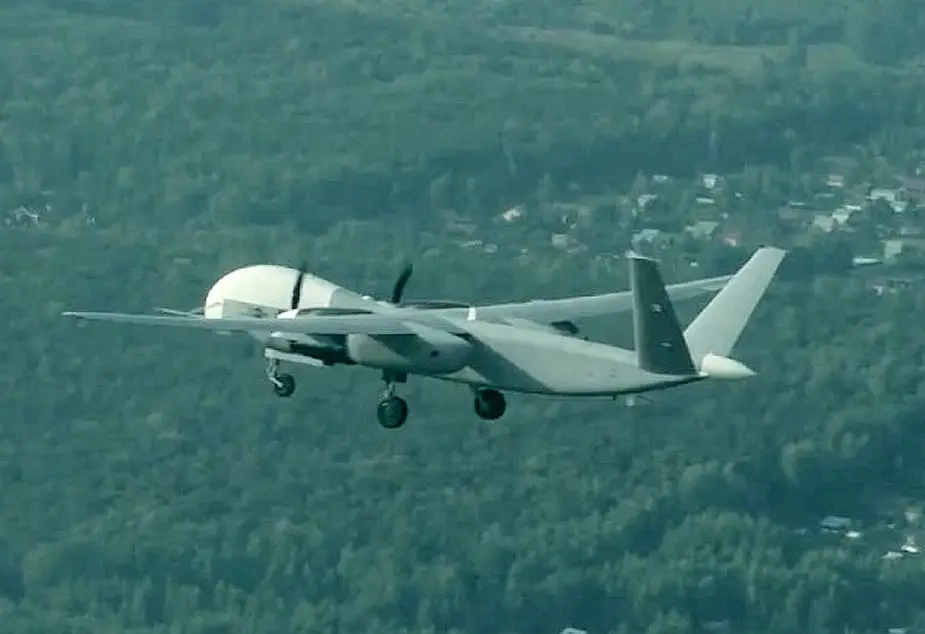Breaking news
Altius-U to become backbone of heavy Russian drone fleet.
There was a major debut of heavy Russian drones in August. The maiden flight of modified Altius-U was overshadowed by the 20-ton Okhotnik. However, it was a major event, as Altius-U will be the backbone of the fleet of Russian heavy drones, the Izvestia daily writes.

Altius-U drone (Picture source: Russian MoD)
Okhotnik jet was designed with stealth technologies for fighting between militarily developed nations. Technical sophistication and uncompromising requirements will take many years of trials and improvements. There will be never a lot of such aerial vehicles because of the high cost.
The 7-ton Altius with propellers and effective diesel engines is fit for low-intensity conflicts and counter-terrorist operations. All foreign analogues were created for similar missions and most are in demand on the global market. The simple construction and equipment give grounds to hope that Altius would be accepted into service much faster than Okhotnik. It can be supplied to the troops in large numbers.
Altius design began in 2011 when the Defense Ministry appropriated 1 bln rubles for the R&D. Another 3.6 billion were allocated in November 2014 when a new stage of the design began. Three drone prototypes were built and flight trials began in 2016. The new and important drone then faced many unpleasant surprises.
The German RED A03 diesel piston engine for the drone was designed by a Russian ethnic with the support of Russian investors. The choice was justified, as there were no alternatives in Russia at the time. However, sanctions imposed on Russia in 2014 created a blow to it. It is yet necessary to launch the production of fully indigenous Russian option by Irkut Corporation.
In September 2018, the Defense Ministry cancelled the R&D contract after a complex audit. The work to upgrade Altius was transferred to the Ural Plant of Civil Aviation (UZGA) which is experienced in batch production of Forpost drones and their modernization.
The situation triggered doubts that the project would survive. However, the maiden flight of Altius confirmed it is alive despite all problems. It demonstrated major progress. Two-way satellite communications of the upgraded drone were a revolution for Russian unmanned aerial vehicles (UAV). It can now use all its capabilities in a long flight. Only fuel restricts the range.
The acceptance of Altius into service is important for naval aviation. The number of its manned aircraft and unmanned Orlan and Forpost is insufficient for effective control of the distant zone. Altius-U in Kamchatka, Crimea and the Northern fleet can revive reconnaissance aviation on a new technical level. The new drone has enough optical, electronic and radar means to independently find sea targets and provide guidance to any weapons in real time.
Major payload will allow the drone to fire missiles against major warships. Such drones are also fit for rescue missions at sea, control of the exclusive economic zone, and the fight against poaching and smuggling.
Syria is the place which mostly needs reconnaissance and assault drones of Altius class. The drone armed with guided munitions can loiter for days in a "free hunt", timely detect the adversary and immediately deliver a precision strike. In Syria, several drones can paralyze the movement of terrorist hardware along a frontline of several dozen kilometers. The 7-ton maximum takeoff weight allows Altius to carry 2 tons of combat payload. Even a pair of 500-kg bombs gives it a much more devastating potential compared to smaller drones.
The success of the heavy drone has to demonstrate the capabilities of the Russian science and aircraft industry. Only the United States currently has such attack drones. Altius-U will have higher payload and better capabilities than the latest Wing Loong II which has been delivered to Chinese troops since 2018. The Turkish vehicle of the same class is only being planned, the Izvestia said.
© Copyright 2019 TASS / Army Recognition Group SPRL. All rights reserved. This material may not be published, broadcast, rewritten or redistributed.


























